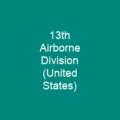Operation Varsity: The Largest Airborne Assault in History
Imagine a day when over 16,000 paratroopers and several thousand aircraft came together to launch the largest airborne operation ever conducted on a single day. That’s exactly what happened during Operation Varsity on March 24, 1945. This daring mission was part of the Allied strategy to breach the Rhine River and advance into Germany towards the end of World War II. But how did this massive operation come about, and why was it so significant?
The Strategic Importance
By March 1945, Allied armies had advanced into Germany and were eyeing the River Rhine as their next target. Breaching the Rhine would allow them to access the North German Plain and advance on major cities like Berlin. Operation Plunder was designed to secure crossings at Rees, Wesel, and an area south of the Lippe Canal, with airborne components playing a crucial role in supporting amphibious assaults.
The Airborne Component
Three airborne divisions were initially chosen for this operation: British 6th Airborne Division, U.S. 17th Airborne Division, and U.S. XVIII Airborne Corps. The British 6th Airborne Division was a veteran division that had taken part in Operation Overlord, while the U.S. 17th Airborne Division was activated in April 1943 and arrived in Britain too late for D-Day but participated in the Ardennes campaign. The U.S. 13th Airborne Division, though not directly involved, provided valuable experience.
Operation Varsity: A Flawless Plan?
Operation Varsity was planned with these three airborne divisions in mind, dropping behind German lines to support the 21st Army Group’s amphibious assaults. However, due to combat transport limitations, only two divisions were eventually used—U.S. 17th Airborne Division and British 6th Airborne Division. The operation aimed to capture key territory, including villages, bridges, and forests.
The Execution
On the morning of March 24, Allied ground units secured crossings on the eastern bank of the Rhine. Over 500 transport aircraft carrying airborne troops and 1,050 troop-carriers towing gliders took off from England and France, rendezvousing over Brussels before turning northeast for the Rhine dropping zones.
Challenges and Triumphs
The first element of the British 6th Airborne Division to land was the 8th Parachute Battalion. Despite facing significant small-arms and anti-aircraft fire, they successfully landed in drop zone A. The 3rd Parachute Brigade secured its objectives, including capturing Schnappenberg with the help of the 1st Canadian Parachute Battalion. The 5th Parachute Brigade encountered heavy fire but eventually cleared the area by 13:45.
The 6th Airlanding Brigade faced challenges due to antiaircraft fire and haze, but managed to secure intact bridges over the River Issel and the village of Hamminkeln with American paratroopers. The 507th Parachute Infantry Regiment was dropped in drop zone W but split into two halves due to excessive ground haze. Colonel Edson Raff rallied his separated paratroopers and led them to their designated area, engaging German artillery en route.
The 194th Glider Infantry Regiment also played a crucial role, landing amidst German artillery batteries and securing objectives despite heavy casualties. Four teams of two OSS agents were sent behind enemy lines but failed to achieve their goals.
A Success Despite Challenges
Operation Varsity was a resounding success. All objectives were captured within hours, and bridges over the Issel had been secured by nightfall. The Diersfordter Forest was cleared, roads cut, and Hamminkeln village secured. By March 27, 14 divisions had crossed the Rhine, with 12 bridges suitable for heavy armour.
Recognition and Criticism
The operation gained official praise from General Eisenhower, who called it ‘the most successful airborne operation carried out to date.’ Major General Ridgway wrote that Operation Varsity was flawless. However, some military historians argue that the operation’s need and execution were questionable. Barry Gregory suggests that Operation Varsity was not necessary, while James A. Huston believes ground forces might have achieved a faster advance.
Logistical Challenges
The massive operation faced significant logistical challenges, including a critical lack of transport aircraft. This shortage meant that one-third of planned troops were discarded, weakening the fighting power of the airborne formation. Glider shortages also occurred but were eventually addressed by shipping new gliders from America and recovering some from the Netherlands and Normandy.
Lessons Learned
The operation highlighted the vulnerability of airborne units to anti-aircraft fire, leading to increased casualty rates. Poor piloting contributed significantly to high casualties, with significant errors made by pilots, including dropping part of a parachute regiment several miles from their designated drop zones.
Conclusion
Operation Varsity was not just a military operation; it was a testament to the bravery and strategic brilliance of Allied forces. Despite its challenges, this airborne assault played a pivotal role in breaching the Rhine and advancing into Germany. As we reflect on Operation Varsity, we are reminded that every successful mission is built on careful planning, courage, and the willingness to face adversity head-on.

You want to know more about Operation Varsity?
This page is based on the article Operation Varsity published in Wikipedia (retrieved on November 28, 2024) and was automatically summarized using artificial intelligence.







